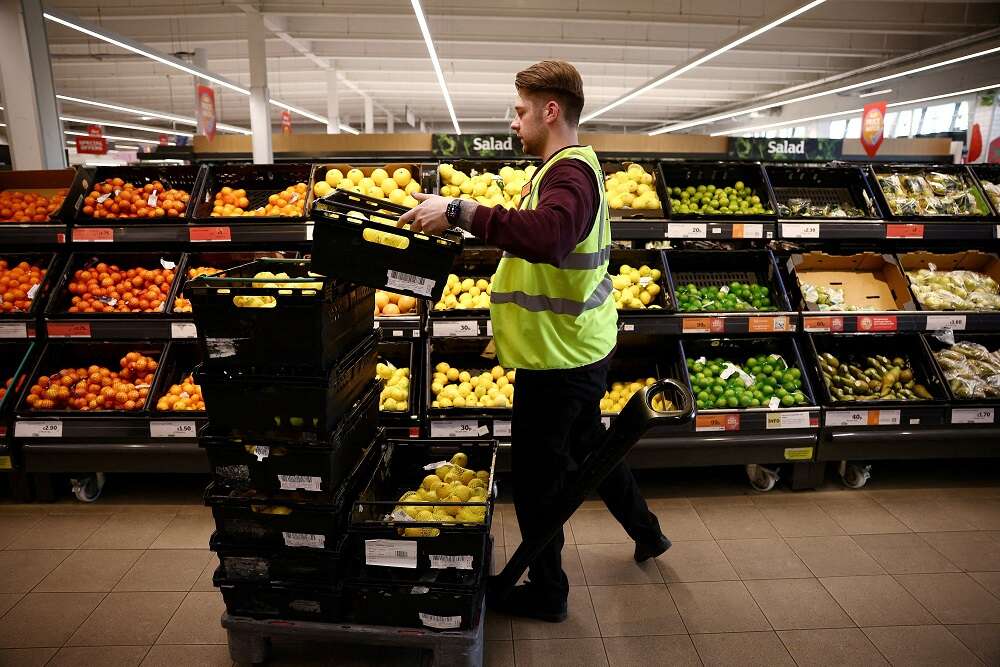
By James Davey
LONDON (Reuters) –Sainsbury’s, the first listed British supermarket to update on Christmas trading, forecast full-year profit at the upper end of its guidance after shoppers spent more than expected on festive treats despite a deepening cost-of-living crisis.
Ahead of Christmas, European retailers worried the trading period could be the worst in at least a decade.
But Sainsbury’s 5.9% rise in underlying sales for the Christmas quarter, backed up industry data showing a record festive performance from Britain’s grocers, who likely gained share of overall spend from non-food retailers.
British inflation at 10.7% is among the highest in the developed world and consumer confidence close to record lows, but retailers that have reported so far have performed well.
Chief Executive Simon Roberts said UK households managed their budgets differently, hosting larger gatherings after two years of pandemic restrictions and treating themselves at home rather than going out.
“Customers shopped early, buying Christmas treats and fizz more than once and looked for deals, taking advantage of Black Friday and other seasonal offers,” he said, highlighting record sales of Champagne and prosecco.
He said sales of technology products were strong in the run up to the soccer World Cup.
However, Roberts was cautious on the consumer backdrop as people face an even tighter squeeze on their finances in 2023, as taxes and mortgage rates rise and UK government support on household energy bills is scaled back.
“We understand money will be exceptionally tight this year particularly as many people wait for Christmas bills to land,” he said.
SHARES DOWN AFTER STRONG RUN
Sainsbury’s, Britain’s second largest supermarket chain with a 15.5% share of the country’s grocery market, ranked only behind Tesco, said 2022-23 underlying pretax profit was expected to be towards the upper end of the previous range of 630 million and 690 million pounds ($767-$840 million).
That compares with the analysts’ consensus of 644 million pounds and the 730 million pounds it made in 2021-22.
The group’s shares were down 1.5% in morning trading, reflecting a strong run ahead of the update. They are up 9.3% over the last month.
Sainsbury’s said total retail sales over the 16 weeks to Jan. 7, excluding fuel, rose 5.2%, reflecting inflation and “relatively resilient volume trends”.
Grocery sales rose 5.6%, while general merchandise sales increased by a better-than-expected 4.6%.
“Investment in value, innovation, service and product availability delivered stronger volume trends across grocery and general merchandise, particularly at Christmas,” Roberts said.
He said Sainsbury’s’ general merchandise business Argos benefited from its reliability and convenience when train and postal strikes disrupted Britain over the Christmas period.
To try to contain prices, Sainsbury’s is spending 550 million pounds over the two years to March 2023, funded by cost savings, to encourage shoppers not to switch to discounters Aldi UK and Lidl GB, both of which have reported bumper Christmas sales.
John Moore, senior investment manager at RBC Brewin Dolphin, said Sainsbury’s was reasonably well-placed “in terms of the balance of its business offering and still has levers to pull in property and further cost and efficiency savings, giving it the opportunity to keep pace with competitors and reinvest in product pricing.”
Tesco updates on trading on Thursday, with analysts also expecting it to have performed well.
(Reporting by James Davey; editing by William James, Jason Neely and Barbara Lewis)


